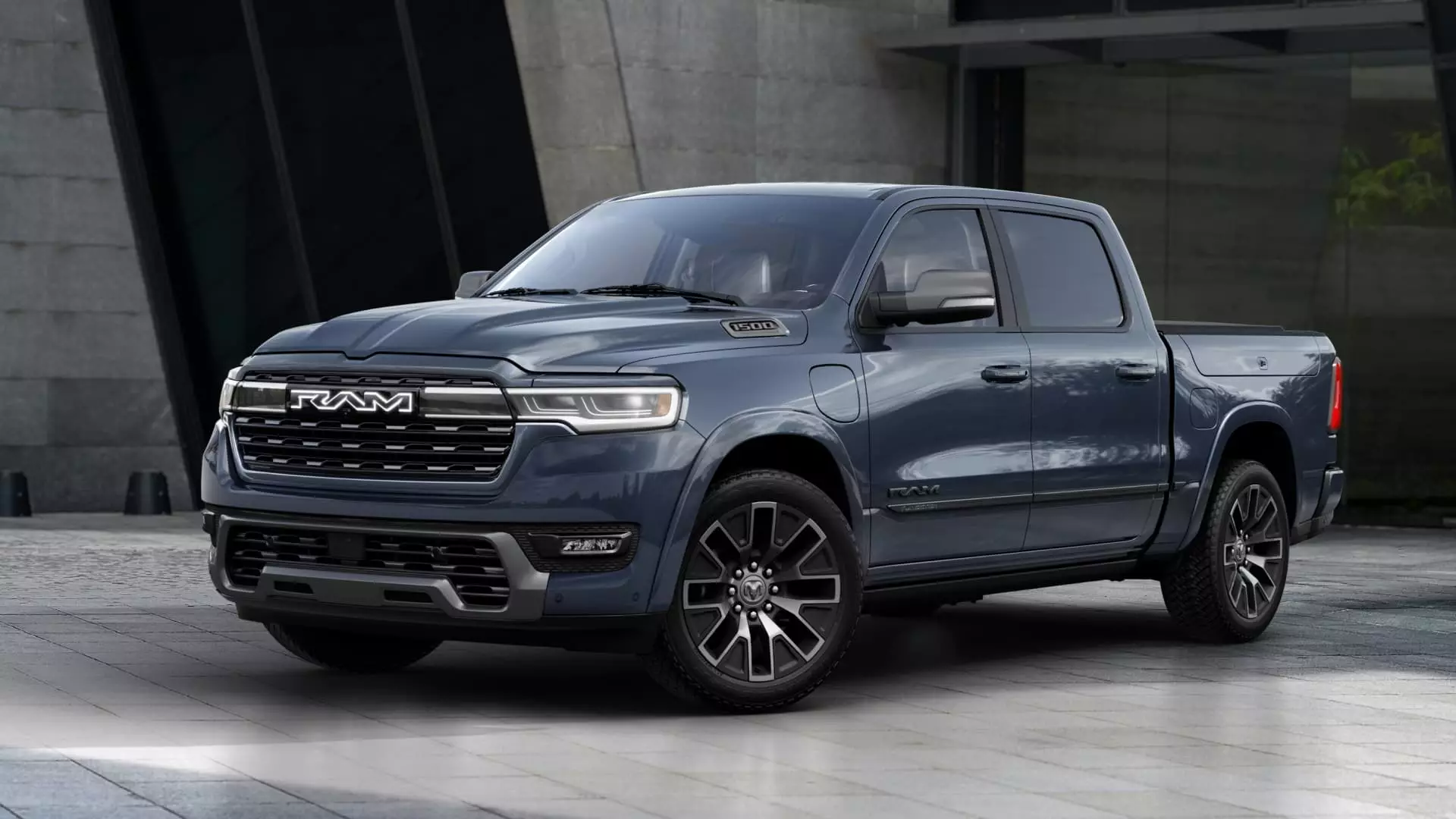In a surprising shift, Stellantis has announced the postponement of the all-electric Ram pickup model, pushing its launch from 2025 to 2026. This decision underscores the automaker’s realization that the expected rate of electric vehicle (EV) adoption has not materialized as swiftly as anticipated. Compounding this, many of Stellantis’s competitors have grappled with profitability in the electric truck segment, highlighting industry-wide challenges that have necessitated a reevaluation of strategies.
The delay comes after the company’s early plans to introduce a fully battery-electric model this year were already shelved, indicating that Stellantis is taking a cautious approach to transitioning its product lineup to EVs. Instead, the automaker is prioritizing the launch of the Ramcharger, an electric range-extended version of the truck that incorporates both gas and electric technologies. This pivot leads to a pressing question: Is a hybrid approach the key to satisfying consumer demand and maintaining market competitiveness in an increasingly electrified landscape?
Stellantis revealed that the choice to prioritize the Ramcharger is strongly influenced by consumer interest toward mixed-fuel options. By offering a model that utilizes both traditional gas engines and electric capabilities, the automaker aims to strike a balance—providing consumers with enhanced range and versatility in their vehicles. As it stands, the Ramcharger is being uniquely positioned as a solution for those consumers who may not be ready to fully commit to a purely electric truck, effectively categorizing it as an “extended-range electric vehicle” (EREV).
The Ramcharger’s design allows for a zero-emissions drive, depleting its battery only to switch over to an onboard generator powered by a gas engine. Stellantis anticipates impressive performance metrics, boasting a potential range of 690 miles, with 145 miles achievable using only electric power. This aspect could resonate well with buyers who view range anxiety as a significant barrier to adopting fully electric vehicles.
This decision reflects broader strategic changes within Stellantis and comes on the heels of a management overhaul, notably the return of Ram CEO Tim Kuniskis. His recent comeback has ushered in a renewed focus on enhancing the brand’s prospects after a reported sales decline of 24% as of the third quarter. Kuniskis, having previously stepped back from the company, returns with a mandate to instigate meaningful adjustments aimed at rejuvenating the brand’s appeal.
As he noted in his remarks, the existing challenges stem from implementation delays with new models, specifically the redesigned Ram 1500 and upcoming heavy-duty trucks. Kuniskis has characterized the road ahead as one that requires diligent work, hinting at significant changes to meet consumer expectations and navigate the shifting automotive landscape.
The postponement of the all-electric Ram pickup reflects a broader uncertainty surrounding the transition to electrification in the automotive sector. By introducing the Ramcharger as a bridge product, Stellantis may be smartly hedging its bets while gauging consumer readiness for fully electric vehicles. However, the long-term success of this strategy will depend on effective execution and the continued evolution of technology within the electric vehicle arena. As competitors refine their approach and consumers reassess their needs, it remains to be seen how Stellantis’s choices will position the Ram brand for success in a rapidly changing marketplace.



Leave a Reply